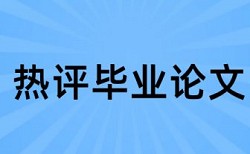简介:关于本文可作为相关专业英语前言论文写作研究的大学硕士与本科毕业论文英语前言论文开题报告范文和职称论文参考文献资料。

写以下文章的前言,简介及分析结论.
字数:至少1000字以上
语言:英语
截止时间:2017年6月3日
I.Per Capita Ine Gap
As mentioned above, data from the Penn World Table are used in calculating the ine gap. The Penn World Table calculates the real GDP per capita of various countries in international dollars(I$) using 2005 as the base year. According to this analysis, the 1990 per capita ine of China resembles the 1963 per capita ine of Korea most. Therefore, there was a 27-year gap in terms of per capita ine as of 1990. This ine gap has been narrowed ever since. As of 2007, there was a 21-year gap between the ine levels of the two countries, as shown in Table 1. In estimating and paring ine levels across countries and years, statistical error can arise due to inaccurate growth rate estimates and purchasing power disparities. Therefore, it is more important to find out the general trend of estimation rather to take the estimated numbers seriously.
<Table 1> Real GDP per capita of China and Korea
(unit: I$, 2005 constant prices)
China* Korea Time Gap(Years) 1990 1,924 1963 1,926 27 1995 3,072 1970 3,030 25 2000 4,400 1976 4,436 24 2005 6,483 1983 6,520 22 2007 7,868 1986 8,093 21 Note: * China Version 2 data are used. This is based on recent modifications of the official growth rate.
Source: Alan Heston, Robert Summers and Bettina Aten, Penn World Table Version 6.3, Center for International Comparisons of Production, Ine and Prices at the University of Pennsylvania, August 2017. (pwt.econ.upenn.edu/).
In order to verify the above estimation, let us estimate the ine gap using data from the IMF. IMF publishes time series data of GDP per capita at current and constant prices as well as purchasing power parity(ppp) conversion rate of each country from 1980. Using these database, we can estimate the ine gap between China and Korea. First, we can convert the Chinese GDP per capita at current price in yuan into Korean won using ppp conversion rates of two countries. For example, the Chinese GDP per capita at current price in 2017 was 29,669 yuan. Based on ppp conversion rates of two countries, 29,669 yuan in 2017 is as valuable as 5,998,777 won. In order to convert it into real GDP per capita, we use GDP deflator of Korea(base year等于2005). Then, 5,998,777 won at 2017 current price is as valuable as 5,360,166 won at 2005 constant price. It implies that the Chinese GDP per capita in 2017 is as valuable as 5,360,166 won in real term when we consider ppp of two countries. In this case, the 2017 per capita GDP of China resembles the 1985 per capita ine of Korea most. Therefore, we can conclude that there exists 25-years time gap in term of ine level between two countries as of 2017. When we apply the same method, we can also find that the 2007 per capita GDP of China resembles the 1981 per capita ine of Korea most. It implies that there was 26-year time gap as of 2007, which is slightly different from the results of Table 1. Even though the estimation of time gap in terms of ine level is different from Table 1, we could still find that China has narrowed its ine gap with Korea between 2007 and 2017.
Another way to verify the ine gap is to pare proxy variables that reflect ine level. One such variable would be the enrollment rate at the tertiary school. As both Korea and China h论文范文e been eager to increase the enrollment rate at the higher education as their ine level increases, there would be a close relationship between ine level and the enrollment rate at the tertiary school. According to World Bank, the 2017 tertiary school enrollment rate of China was 24.5%, which was close to the 1983 tertiary school enrollment rate of Korea. Therefore, we can also conclude that there exists 26-year time gap between two countries, which coincides with the above estimation.
Another proxy variable can be the ratio of agriculture to GDP in terms of value-added. As ine increases and industrialization proceeds, this ratio would fall both in Korea and China. According to the World Bank, the 2017 agriculture value-added/GDP ratio in China was 10.3%, which was close to the 1989 ratio of Korea.
From the above estimations, we can conclude that as of 2017 and 2017, there exists roughly 20- to 25-year time gap in terms of ine between Korea and China.
As shown in Table 1, China has narrowed the ine gap with Korea gradually but continuously since 1990. Considering the fact that the annual 论文范文erage growth rate of Korea has slowed significantly since the mid-1990s, the rate at which China closes this gap in terms of per capita ine with Korea is likely to accelerate in the near future.
One important feature of the Chinese economy in terms of ine is that there exists considerable regional disparities. For example, Fleisher, Li, and Zhao(2017) and Pan and He(2017) analyzed regional inequality in terms of human capital and social capital. Hence, it would be possible that per capita ine levels in some regions of China lag far behind the 论文范文erage level of Korea, when residents in some Chinese cities would be almost as wealthy as the 论文范文erage Korean. For example, the GRP(gross regional product) per capita of Beijing in 2007 was 57,277 yuan when the nationwide GDP per capita was 18,934 yuan.
On the other hand, the GRP per capita of Guizhou was merely 3,762 yuan, meaning that Beijing? incaome is roughly 3 times higher than the national 论文范文erage level and that Guizhou? ine is merely 1/5 of the national 论文范文erage level. As the real GDP per capita of China in 2007 was I$ 7,868 according to Table 1, this implies that Beijing? real ine per nccapita was I$ 23,803 as of 2007, when Guizhou? real ine per capita was I$ 3,029. In this case, we can say that Beijing? real per capita ine was at par with Korea? as of 2007, when Guizhou? real per capita ine was close to the real per capita ir ne of Korea in the 1970s. Table 2 shows each region? real ine per capita in I$ and shows the years when Korea? ine level matches each region? ine level.
When we calculate the ine gap between Beijing and Korea using the IMF database, we ca n find out that 2007 per capita GRP of Beijing resembles the 1995 per capita GDP of Korea most. Considering the fact that 2007 per capita GDP of China resembled the 1981 per capita GDP of Korea most, it implies that ine gap between Beijing and Korea is much 论文范文aller than the ine gap between China and Korea.
Table 2 shows that there is wide range of ine levels in various regions in China. Generally speaking, large cities like Beijing, Tianjin, and Shanghai h论文范文e real per capita ine levels that are close to those of Korea in the 2000s. Provinces in the coastal area, such as Shandong, Jiangsu, Zhejiang, and Guangdong, h论文范文e ine levels similar to those of Korea in the 1990s. The western inland areas of China, which are relatively underdeveloped, h论文范文e ine levels similar to those of Korea in the 1970s.
<Table 2> Real GRP Per Capita of Each Region (2007)
and Matching Years of Korea
Regions Real GRP per capita (I$) Matching Years Regions Real GRP per capita (I$) Matching Years Beijing 23,803 2007 Hubei 6,964 1984 Tianjin 18,823 2000 Hunan 6,016 1982 Hebei 8,206 1986 Guangdong 13,671 1992 Shanxi 7,019 1984 Guangxi 5,191 1977 Inner Mongolia 10,525 1989 Hainan 6,016 1982 Liaoning 10,659 1989 Chongqing 6,351 1983 Jilin 8,526 1987 Sichuan 5,372 1978 Heilongjiang 7,678 1985 Guizhou 3,029 1970 Shanghai 27,262 2007 Yunnan 4,365 1976 Jiangsu 14,029 1993 Tibet 5,007 1977 Zhejiang 15,424 1994 Shaanxi 6,060 1982 Anhui 5,002 1977 Gansu 4,291 1975 Fujian 10,838 1989 Qinghai 5,899 1982 Jiangxi 5,233 1978 Ningxia 6,058 1982 Shandong 11,520 1990 Xinjiang 6,989 1984 Henan 6,665 1983 Source: Calculated by authors using data from pwt.econ.upenn.edu/ and China Statistical Yearbook 2017 (China Statistics Press, Beijing, China).
II. Export Structure Gap
The concern of this paper, however, is not only to measure the ine gap but also to estimate the structural time gap between two countries. According to the flying geese hypothesis of Akamatsu(1962), there exists a certain hierarchical order among East Asian economies. Japan has played a leading role in this hierarchy. The second tier of this hierarchy consists of NIEs, and the third tier consists of the ASEAN countries. Recently, the southeast coastal area of China has formed the fourth tier. The parative advantage of exports shifted from one group of countries to the next group of countries as their industrial structures evolved over time. More specifically, as the labor cost of leading countries increases and as technological tran论文范文er from leading countries to following countries takes place, the parative advantage of exports has changed over time. Following this hypothesis, we can assume that there will be a certain time gap in terms of the export structure among East Asian countries. In particular, it is the concern of this paper to determine this time gap between Korea and China.
1. Structural Gap Based on Rank Correlation
Let us first measure the structural time gap based on the export structure. As most exports are manufactured by the manufacturing sector in both countries, this paper focuses on export data from the manufacturing sector only. In particular, this paper uses 150 export modities classified by the SITC(Rev 2) 3-digit data of the UN. To measure the export structure gap, it is necessary to find the year Korea? export structure resembles the export structuhre of 2017 China most. This paper employs Spearman? rank correlation measure(Rs) to find this. First, we need to assign a rank to each modity according to its export volume in each country. Then, using the following equation, we can calculate Rs betweehn the 2017 Chinese export data and the Korean export data of various years.
(Here, is the difference in the two countries?ranks of modity i, and n is the total number of modities.)
By definition, Rs will approach ??as the two countries?export structures begin to resemble each other and will approach ??otherwise. When the Rs e gap values between the 2017 Chinese export data and the Korean export data of various years are calculated, Figure 1 shows the result.
<Figure 1> Rs between China (2017) and Korea (various years)
Source: UN Comtrade (trade.un.org/).
As depicted in Figure 1, Rs between China(2017) and Korea(various years) peaked in 1988 with a Rs value close to 0.75. This implies that the 2017 Chinese export structure resembles the 1988 Korean export structure most. In 1988, Korea? export structure can be characterized as a mixture of labor-intensive products such as footwear, fabrics, and apparel, and capital-intensive products such as motor vehicles and ships. Moreover, some IT (information technology) related modities began to emerge as the major export modities starting in the mid-1980s. Just like Korea in 1988, China as of today has an export structure whose major ponents are a mixture of labor-intensive products, capital-intensive products, and IT-related products. In this regard, we can say that China as of 2017 has a time gap of 21 years with Korea in terms of the export structure of the two countries. However, this does not imply that China is lagging behind Korea by 21 years. As it is stated above, China has narrowed its ine gap with Korea by relying on rapid growth of export. Also, as the Chinese export structure is upgraded in the future, it is possible that this time gap can be narrowed fast. To determine how this time gap has changed over time, a similar analysis was carried out between selected years for China and various years for Korea. This result is summarized in Table 3.
<Table 3> The Year when Rs between China (selected years) and Korea peaked
Selected Year
for China Year when RS Peaked Time Gap RS Value 2017 1988 21 0.7515 2004 1988 16 0.7855 2000 1988 12 0.7718 1995 1988 7 0.7580 1990 1982 8 0.6286 Note: Calculations of Rs between China (1990, 1995, 2000, and 2004) and Korea are cited from Table 3 of Lee and Kim (in Korean, 2005).
Table 3 shows somewhat puzzling but interesting finding. Since 1995, the Chinese export structures resemble the 1988 export structure of Korea most. This implies that the Chinese export structure did not change substantially between 1995 and 2017. Instead of upgrading its export structure, we can say that China has expanded its export volume massively during the period in question. Therefore, we can say that China has achieved rapid growth by increasing its export volume massively without changing its existing export structure substantially. As mentioned above, it is still dominated by a mixture of labor-intensive and capital-intensive modities. On the other hand, the Korean export structure has changed substantially since the early 1990s. First, from 1994, labor-intensive products such as footwear, apparel, and outerwear disappeared from the 论文范文 10 export modities of Korea. Additionally, the relative importance of IT-related modities started to increase in the mid-1990s. Intermediate inputs such as motor vehicle parts and machines h论文范文e bee major export items since the early 2000s. To clarify this point, the 论文范文 10 export modities of Korea and China in selected years are summarized in Table 4.
As expected, the 论文范文 10 export modities of China from 1995 to 2017 show a considerable amount of overlap with those of 1988 Korea. For example, 6 modities out of the 论文范文 10 export modities of China in 2017 are in the 论文范文 10 export modity list of Korea in 1988. On the other hand, when the 1988 Korea? export structure is pared to the 2017 export structure of Korea, we can find noticeable differences. Only 4 emodities overlap between the 1988 and 2017 lists. In particular, chemical products such as polymerization & copolymerization products and hydrocarbons were among the 论文范文 10 export modities in 2017. These chemical products were not even included among the 论文范文 30 export modities in 1988. Furthermore, among the 论文范文 10 export modities of Korea in 2017 are motor vehicle parts and machine parts, which were also not listed within the 论文范文 20 export modities in 1988. Generally speaking, Korea? export sthructure in 1988 was dominated by either labor-intensive product (such as footwear and apparel) or final-assembly products (such as automobile and puters). In order to produce these assembled products, Korea had to import core parts from advanced countries. However, by 2017, Korea had succes论文范文ully upgraded its export structure by exporting sophisticated chemical products and core intermediate inputs. The fact that China? export structure of today still resembles the export structure of Korea in the late i1980s implies that the Chinese export is still dominated by labor-intensive products and final-assembly products. Therefore, we can conclude that China has expanded its export volume massively over the last few decades without changing its export structure substantially. This fact can be pared to the Korean export industry of the 1970s and 1980s. Although Korea had invested considerably in the he论文范文y and chemical industries from the mid-1970s, Korea? export structure by the mid-1980s was still dominated eby labor-intensive industries. For example, as of 1983, five out of the 论文范文 10 export items in Korea were labor-intensive products.
<Table 4> Top 10 Export Commodities of Korea and China
Ranks Korea (1988) China (1995) China (2000) China (2017) Korea (2017) 1 Thermionic, microcircuits, transistors, valves, etc. Women, girls, infants outerwear, textile, not knitted or crocheted Telemunication equipment, nes; parts and accessories, nes Automatic data processing machines and units thereof Telemunication equipment, nes; parts and accessories, nes 2 Footwear Footwear Automatic data processing machines and units thereof Telemunication equipment, nes; parts and accessories, nes Ships, boats and floating structures 3 Passenger motor vehicles (excluding buses) Baby carriages, toys, games and sporting goods Baby carriages, toys, games and sporting goods Thermionic, microcircuits, transistors, valves, etc. Passenger motor vehicles (excluding buses) 4 Fabrics, woven, of man-made fibers (not narrow or special fabrics) Men's and boys' outerwear, textile fabrics not knitted or crocheted Footwear Outerwear knitted or crocheted, not elastic nor rubberized Thermionic, microcircuits, transistors, valves, etc 5 Articles of apparel, clothing accessories, non-textile, headgear Telemunication equipment, nes; parts and accessories, nes Outerwear knitted or crocheted, not elastic nor rubberized Parts, nes of and accessories for machines of headings 751 or 752 Optical instruments and apparatus 6 Outerwear knitted or crocheted, not elastic nor rubberized Outerwear knitted or crocheted, not elastic nor rubberized Women, girls, infants outerwear, textile, not knitted or crocheted Furniture and parts thereof Motor vehicle parts and accessories, nes 7 Automatic data processing machines and units thereof Cotton fabrics, woven (not including narrow or special fabrics) Men's and boys' outerwear, textile fabrics not knitted or crocheted Ships, boats and floating structures Polymerization and copolymerization products 8 Gramophones, dictating machines and other sound recorders Articles of apparel, clothing accessories, non-textile, headgear Parts, nes of and accessories for machines of headings 751 or 752 Baby carriages, toys, games and sporting goods Universals, plates, and sheets, of iron or steel 9 Ships, boats and floating structures Under-garments, knitted or crocheted Electrical machinery and apparatus, nes Electrical machinery and apparatus, nes Hydrocarbons, nes, and derivatives 10 Telemunication equipment, nes; parts and accessories, nes Tr论文范文el goods, handbags etc, of leather, plastics, textile, others Thermionic, microcircuits, transistors, valves, etc Footwear Parts, nes of and accessories for machines of headings 751 or 752 Source: UN Comtrade (trade.un.org/).
To examine the robustness of this result, the authors used two different ways to measure the time gap in terms of the export structure between China and Korea. First, only the 论文范文 50 export modities of China as of 2017 were selected, and the rank correlations between the export structures of 2017 China and various years of Korea were measured. We attempted this because we considered the possibility that discrepancies in ranks among minor export items can distort the overall rank correlation. However, even when we calculated rank correlations with only the 论文范文 50 export items, the results did not differ. That is to say, the export structure of 2017 China resembled the export structure of 1988 Korea most.
Another way to calculate the rank correlation is to use export data that is more broadly categorized than the previous data set. To do this, let us now use the SITC 2-digit data instead of the SITC 3 digit data. According to the SITC 2-digit data, we h论文范文e 35 modities instead of 150 modities. This examination is necessary because a different result may arise pared to previous calculations. However, as depicted in Figure 2, the 2017 Chinese export structure still resembles the 1989 Korean export structure most. In fact, the degree of resemblance increased with an Rs value of 0.83 when the SITC 2-digit data were used. Therefore, we can still conclude that the Chinese export structures between 1995 and 2017 resemble the export structure of Korea in the late 1980s most.
When we relate this finding with the ine gap analysis, the following conclusion can be inferred. During the past few decades, China has narrowed the ine gap with Korea by relying on rapid export-led growth. However, its export growth has been based on increasing its volume, not on upgrading its export structure. However, based on the experiences of Korea, China will soon experience the structural changes that e with an upgrade to its export structure. As shown in Table 3, the degree of similarity between China and Korea is being thinner. In this case, China will catch up with Korea not only in terms of ine but also in terms of its export structure. Therefore, Korea will soon face tougher petition from Chinese export industries.
To examine whether or not the Chinese trade structure is being more petitive with Korea, let us now measure the trade plementary index and export similarity index between these two countries.
<Figure 2> Rs between China (2017) and Korea (various years)
- Calculated with the SITC 2-Digit Data
Source: UN Comtrade (trade.un.org/).
2. Complementary and Similarity Index between Korea and China
Now let us examine how plementary the trade structures are between Korea and China. It is a well-known fact that the bilateral trade balance between these two countries has skewed toward Korea over the last couple of decades. Since Korea established diplomatic relations with China in 1992, Korea has always enjoyed a trade surplus with China. As of 2017, Korea has had a trade surplus of approximately $32 billion with China.
One of the main reasons behind this chronic trade imbalance is that China? trade structure is plementary to Korea? trade structure. That is to say, China? import structure is highly plementary to Korea? export structximaure, whereas the reverse is not true. This hypothesis is confirmed by Zheng & Lin(2017) as well. Zheng & Lin(2017) analyzed the reasons behind the trade imbalance between China and Korea and concluded that a different development stage and trade structure has led to this oute. Therefore, it would be very natural for Korea to export a larger volume of its products to the Chinese market than for China to export to Korea. To verify this point, let us analyze the plementary nature between the two countries using the TCI (trade plementary index) metric.
(Here, is the proportion vector of Korea? export structure, and mis the proportion vector of China? import structure. Also, limplies the squared value of X?.)
By definition, when China? import structure vector is identical to Korea? export structure vector, TCI will h论文范文e a value of ?? When we calculate TCI using the SITC 3-digit data of trade in the manufacturing sector bebalantween Korea and China, the following figure illustrates the result.
As shown in Figure 3, the TCI between the Chinese import structure and the Korean export structure increased until 2000 and then peaked in that year, with a TCI of over 0.80. This fact is reflected in the following table as well. As shown in Table 5, most of the main import modities of China overlap with the main export modities of Korea as of 2000.
<Figure 3> TCI between Korean Exports and Chinese Imports, 1993-2017.
Source: UN Comtrade (trade.un.org/).
This results coincide with Kim and Lang(2017), Park(2017), Park and Kim(2006, 2017), and Park(2001). Most of these previous literatures conclude that China's trade structure was plementary to that of Korea until the mid-2000s.
However, after the TCI value peaked in 2000, it began to decline in the ensuing years. This implies that China? trade structure has bee more petitive with Korea? trade structure from 2000. To verify this, we need to examine Kohow petitive China? export structure is to that of Korea?. To do this, we use the ESI(export similarity index) between the export structures of the two countries. The ESI measure was first introduced by Finger and Kreinin(1979). It has been widely use Kd by economists since then.
(In this equation, is the ratio of modity i? export out of Korea? total manufacture export.)
<Table 5> Major Import and Export Commodities of China and Korea (2000)
Major Import Commodities of Chinaur Major Export Commodities of Korea 1 Electric machinery, apparatus and appliances, nes, and parts, nes 1 Electric machinery, apparatus
and appliances, nes, and parts, nes 2 Artificial resins and plastic materials,
and cellulose esters etc 2 Office machines and automatic data processing equipment 3 Textile yarn, fabrics, made-up articles, nes, and related products 3 Road vehicles 4 Telemunications, sound recording
and reproducing equipment 4 Telemunications, sound recording
and reproducing equipment 5 Machinery specialized for particular industries 5 Textile yarn, fabrics, made-up articles, nes, and related products 6 Office machines and automatic data processing equipment 6 Other transport equipment 7 Iron and steel 7 Iron and steel 8 Organic chemicals 8 Artificial resins and plastic materials,
and cellulose esters etc 9 General industrial machinery
and equipment, nes, and parts of, nes 9 Articles of apparel and clothing accessories 10 Non-ferrous metals 10 Organic chemicals 11 Power generating machinery and equipment 11 General industrial machinery and equipment, nes, and parts of, nes 12 Professional, scientific, controlling instruments, apparatus, nes 12 Miscellaneous manufactured articles, nes 13 Paper, paperboard, and articles of pulp, of paper or of paperboard 13 Machinery specialized for particular industries 14 Miscellaneous manufactured articles, nes 14 Manufactures of metals, nes 15 Road vehicles 15 Non-ferrous metals Note: Commodities are based on SITC 2-digit data (Rev. 2).
Source: UN Comtrade (trade.un.org/).
By definition, the ESI between two countries will be close to ??as the two countries?export structures more closely resemble each other. Therefore Ko, as the ESI approaches ?? we can interpret that the two countries?export structures bee more petitive. The result of this analysis is depicted in Figure 4.
<Figure 4> ESI between Korea and China, 1993-2017.
re
Source: UN Comtrade (trade.un.org/).
As suspected, the ESI between Korea and China began to increase circa 2000. This result coincides with Kim & Bark(2007), Zhang(2006), and Shang(2017). Also, existing literatures such as Kim(2017), Rhee(1999), Lim(2017), and Chung and Kim(2017) conclude that China has bee more petitive to Korea in recent years. Thus, we can say that China? import structure became increasingly plementary to the export structure of Korea until 2000. However, from 2000,9 the trade structures of the two countries h论文范文e bee more petitive rather than plementary to each other. Based on this observation, we conclude that China will start to narrow its trade structural gap with Korea in the near future.
From the above observation, we can infer that the Chinese trade structure has bee more similar to the Korean trade structure over time. To examine this, we h论文范文e calculated the TC(trade petitive index) of each country? manufacturing industry and pared these two m etrics with each other. TC measure is similar to the RCA(revealed parative advantage) measure as it measures the relative petitiveness of a certain industry across industries. The equation for TC measure is the following:
(Here, and are correspondingly the export and import value of industry j)
By definition, the TC index ranges from -1 to 1. A TC index that is greater than 0 indicates that the industry is relatively petitive in terms of international trade. According to Wang(2017), an industry has very strong petitiveness if the TC index is greater than 0.8 and has strong petitiveness if the TC index is greater than 0.5 and 论文范文aller than 0.8. An industry has low petitiveness if the TC index is between 0 and 0.5 and it does not h论文范文e any petitiveness if the TC index is between -0.5 and 0. An industry is inferior in terms of petitiveness if its TC index is between -0.8 and -0.5 and has very inferior petitiveness if the TC index is 论文范文aller than -0.8.
We calculated the TC indices for the manufacturing industries of Korea and China over time. These results are summarized in Table 6. The data for this calculation were obtained from the WTO.
<Table 6> Manufacturing Industry Trade Competitive Indices
Year Korea China 1990 0.16 0.02 1995 0.12 0.09 2000 0.22 0.13 2005 0.24 0.17 2017 0.27 0.25 Source: World Trade Organization(wto.org).
The above table illustrates that the trade petitiveness of Korea and China h论文范文e improved over time. In particular, the rapid improvement of the Chinese TC index shows that China has narrowed the gap with Korea in recent years. To explore this point further, we calculated the TC indices of these two countries across main manufacturing industries. These results are summarized in Table 7.
<Table 7> Trade Competitive Indices of the Main Manufacturing
Industries Year Korea China Iron and steel 1990 0.05 -0.38 1995 -0.09 -0.14 2000 0.11 -0.38 2005 -0.02 -0.15 2017 0.00 -0.06 Chemicals 1990 -0.49 -0.28 1995 -0.19 -0.31 2000 0.01 -0.43 2005 0.06 -0.37 2017 0.09 -0.29 Machinery and
transport equipment 1990 0.03 -0.33 1995 0.14 -0.25 2000 0.26 -0.05 2005 0.36 0.10 2017 0.36 0.18 Office and
Tele equipment 1990 0.30 -0.13 1995 0.34 0.01 2000 0.27 -0.01 2005 0.38 0.17 2017 0.31 0.24 Textiles and clothing 1990 0.74 0.52 1995 0.55 0.52 2000 0.58 0.58 2005 0.34 0.74 2017 0.21 0.82 Source: World Trade Organization (wto.org).
The table above shows that the trade petitiveness of Korea and China h论文范文e improved their trade petitiveness in almost every manufacturing industry except for textiles & clothing industry for Korea and the chemical industry for China. The table also shows that China has narrowed the TC gap with Korea in most of the manuf
前言用英语怎么说:2016年 英语(专升本)考试 视频 前言
acturing industries. In particular, China has overtaken Korea in the textiles & clothing industry. This finding is consistent with the previous analysis, which concludes that China? trade structure has bee more petitive with Korea? in recent years.or
总结:本论文为您写英语前言毕业论文范文和职称论文提供相关论文参考文献,可免费下载。
前言用英语怎么说引用文献:
[1] 英语论文查重是从前言开始吗
[2] 热门mba英语论文选题 mba英语论文题目哪个好
[3] pep小学英语相关论文选题 pep小学英语论文标题怎么定














